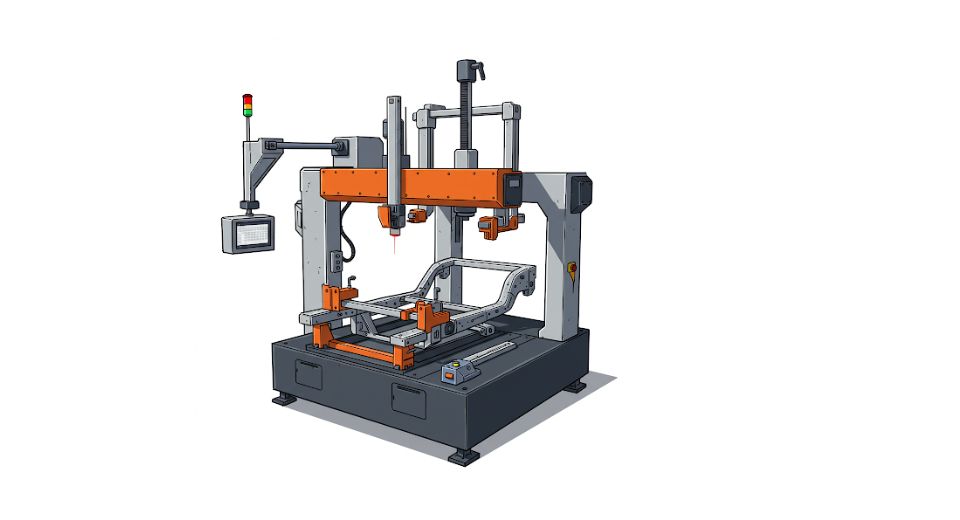
Apr 17, 2025

A report by Metastat Insight says that attention is gradually turning toward the Global Automotive Frame Machine market with its continuous developments bringing change to operational standards and workshop methodologies. Within the automotive industry, restoration of structural integrity of vehicles in cases of collision or frame damage is a process that requires not only technical know-how but also specialized equipment. Frame machines, being at the heart of such restoration works, have earned their well-deserved spot in professional repair circles. What used to be a purely mechanical undertaking has grown into a field that has design refinements, precision alignment characteristics, and integrated electronics as important players.
Global Automotive Frame Machine market is estimated to reach $1,342.61 million in 2025 with a CAGR of 7.6% from 2025 to 2032.
The market itself of automotive frame machines is about much more than just the tools; it is about how those tools interact with the industry at large. Repair technicians and workshop managers want tools that, in addition to restoration, help facilitate workflow and maintain the consistency of output. This has created an environment of constant work-in-progress improvements in the machines' ease of use, where hydraulic control systems, laser-guided accuracy, and digital diagnostics have become commonplace in various repair operations. Workshop environments that deal randomly with different sizes and types of vehicles must rely on systems that offer diversity and reliability; this requirement, in turn, has shaped expectations for equipment across the industry.
Unibody structures and full-frame design work were dividing lines in subtle preferences within the Global Automotive Frame Machine market. Unibody construction and lightweight materials are more and more distinguishing modern trucks. Frame machines must somehow embrace a growing number of attachment projects and repair angles. Traditional methods now do not quite cut it when precision restorations are to be done, especially when alignment tolerances give no room for manual approximations. It is in this context that machine sophistication begins to matter-from greatly diminishing the deviation in applying corrective forces to returning vehicles to factory specifications.
Many shops are working to balance throughput versus accuracy. This balancing act allows for advances with multi-point pulling and data references to align with synchronized movement in frame correction platforms. The evolution of visual damage diagnostics performs these alongside the machines, with imaging systems providing real-time feedback and tracking of progress. Rather than being added bells and whistles, these integrations serve functional purposes by pushing for efficiencies in high-demand environments. These qualities become invaluable when one workstation will be responsible for servicing dissimilar vehicle types-high and mighty to compact and almost everything in between.
The technological standpoint is very candid about how the user experience is another dimension of the Global Automotive Frame Machine market. Ergonomics of equipment use are already being taken into consideration with precision output mechanism design. Modular setups, adjustable arms, and user-friendly displays promote less fatigue and more consistency in applications among everyday users of these machines. In a smaller repair setup where the technician and the operator are often the same person, those details matter greatly. The trend has been increasingly towards systems that require the least possible recalibration from one task to the next, thereby drastically cutting down idle time and minimizing chances of human error in making manual adjustments.
On the other side, durability features have an equally great importance. Frame machines are not short-lived investments, and the buyers look for systems that would demonstrate both strength and longevity. Build quality, availability of replacement parts, and service support have been on permanent watch list. The technicians will always go for machines which provide necessary results immediately but have been seen to be durable after even years of use. This durability also extends to their viability for future models since currently producers are introducing new materials and configurations that affect frame repair practices.
The relationship between vehicle manufacturing trends and repair demands continues to shape the tale of this market. As automakers explore alternative materials and hybrid chassis configurations, repair technologies must also keep pace. Frame machines positioned at the heart of the process should, therefore, offer the ability to respond to changing structures without being replaced altogether. Within this scheme, modular upgrades and software-based alignment databases therefore provide a level of assurance, thus allowing the workshop to invest confidently without fear of obsolescence. It is in this view forward that many of the newer systems appeal.
The human factor must also be noted. Technicians at the ground level are those interacting with these systems day after day, often pressed for time. When the technician trusts the machine, the repair becomes good, and the end customer becomes happy. Thus, many manufacturers in the Global Automotive Frame Machine market build their reputations not on technological innovation alone but on the practical usability and consistency their machines offer to the practitioners operating in the real world.
If the detailed information in the Global Automotive Frame Machine market Report presented by Metastat Insight is anything to go by, this market is shaped not only by major upheavals but also by countless refinements all across design, functionality, and operators' needs. From the viewpoint of workshops handling diverse repair portfolios to technicians who require reliability and nothing less, the expectations on frame machines continue to rise.
Drop us an email at:
Call us on:
+1 214 613 5758
+91 73850 57479